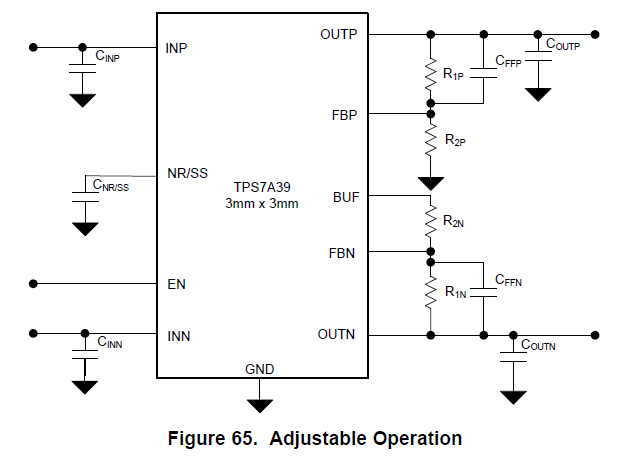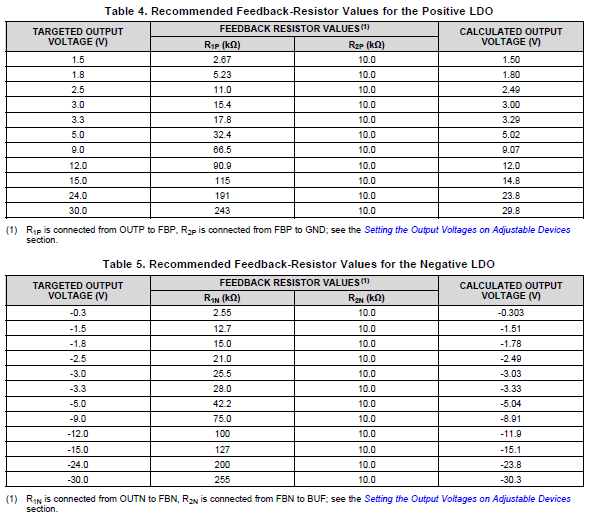Hi,
I want to use the TPS7A39 to regulate two 3.7V batteries to +-3.3V. According to the typical application circuit and tables attached (extracted from the device's datasheet), the resistors for this would be R1p = 17.8k, R2p = 10k, and R1n = 28k, R2n = 10k.
My question is, would it be possible to obtain the same 3.3V output with another ratio of resistors? According to the formula, using the suggested values of R1p and R2p, I can obtain the value of VNR/SS, and thus I can get different values of resistors that would, in paper, get the same 3.3V (or very close to it). The same can be done for the negative supply. For example, using R1p = 17.8k, R2p = 10k, and R1n = 28k, R2n = 10k, I got:
3.3 = VNR/SS*(1+17.8/10) => VNR/SS = 1.18. So, trying to adjust to my available SMD resistor values, I got: R1p = 12k and R2p =6.8k, giving a Vout = 3.28V.
-3.3V = VNR/SS*(-28k/10k) => VNR/SS = 1.18 (should've expected that it would be the same). And trying to adjust the values to my resistors, I got R1n 22k = and R2n = 7.8k, giving a Vout = -3.32V.
Is this calculation going to output the desired voltage if connected to the circuit attached? Or do I have to use the specified ones that are on the table?
Thanks in advance,
Roberto



